My Child Has Flat Feet: What Should I Do?
If you have noticed that your child’s feet look rather flat, the key question then should be: ‘Do my child’s feet hurt, particularly during or after exercise’?
Concerned about your child’s feet? Click here if the arches of the feet are causing aches and pains associated with walking or running,
Every foot’s risk of injury is due to it being unable to fulfil its role properly when walking or running, rather than being a result of its shape alone. Some flat feet are a result of bone or joint deformity. In these cases, the foot is usually stiff and reluctant to alter its shape on weightbearing and under manipulation when non-weightbearing. The affected foot tends to look and feel different to the unaffected foot. Such feet need assessment to find the reason for their stiffness, even if there is no pain.
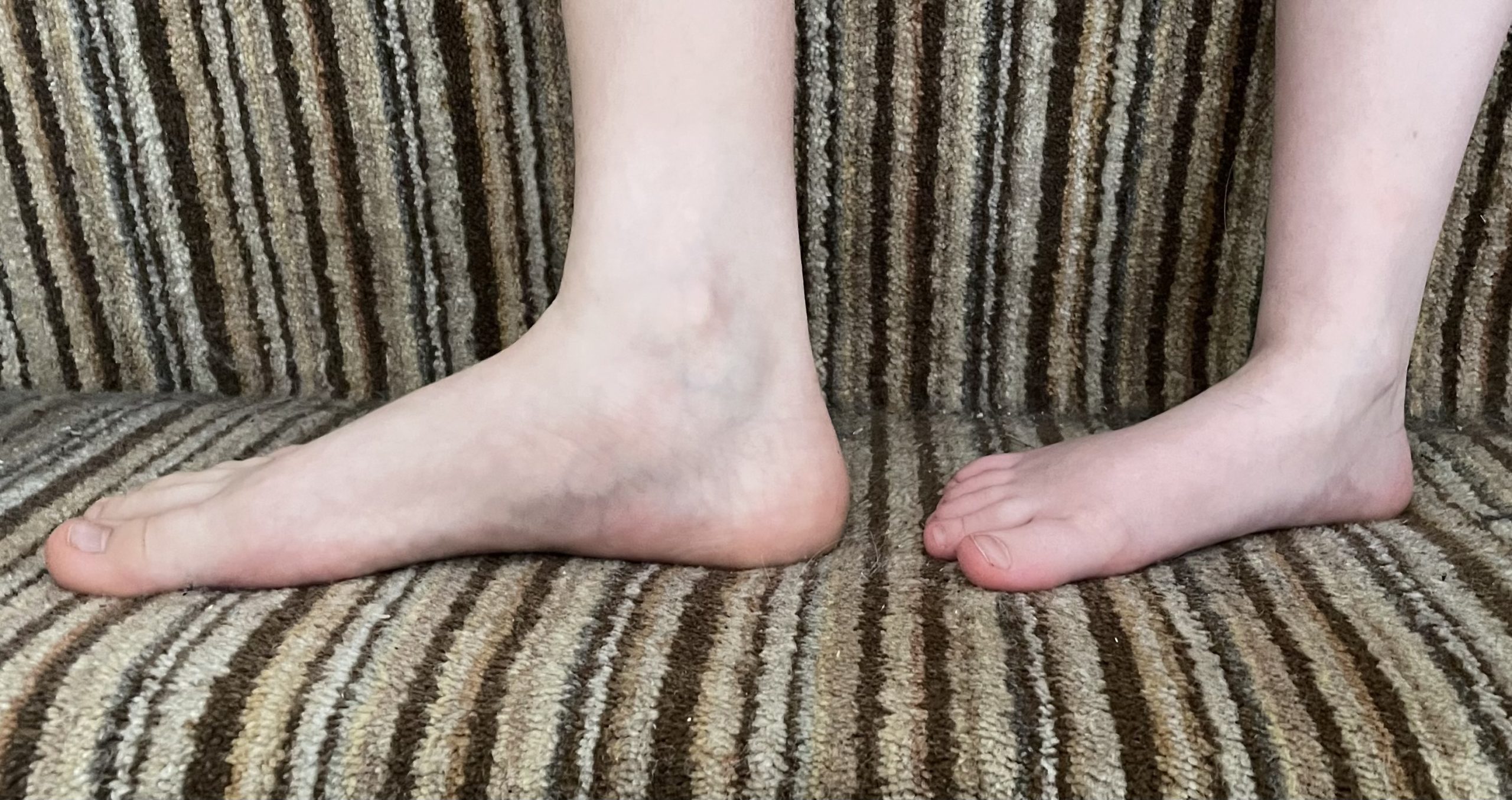
The inside arch of an eleven-year-old boy and a five year-old-girl are compared. The arches of the feet start to develop around age five, but usually remain flatter than adults until around age twelve at least. Childrens feet also tend to be more flexible than adults, which makes their arch flatten more on standing down. this flexibility often lasts through teenage years.
What Do the Arches of the Feet Do?
The foot has arches to help it deform safely under impact loads, much like the ‘crumple zone’ of a car that can deform easily to protect the driver from impact forces during a road accident. When the foot loads fully onto the ground, the arches start lengthening and widening under body weight. The foot’s arch is more like a ‘springy’ three-dimensional vault than it is a fixed structural arch. It compresses down during each step to then elastically spring back into shape once it starts offloading, ready for the next step. For the foot to achieve this action, important muscular control is required. This demands quite an advanced nervous system so that the correct amount of foot deformation can occur during walking or running.
Having an arch with a ‘middle-ish’ profile makes it a bit easier to control the amount of arch deformation during each step (which is variable). Flatter feet tend to make feet easier to deform but less able to spring back into an vault shape. This loss of a stiffening-spring affects the ability to drive forward on the foot unless the muscles contract more actively. High arch feet tend to be less able to deform and shock absorb under impact loading of body weight. However, they are easier to push forward upon.
To understand these principles, think how easy impact-cushioning is on soft sand compared to concrete, but also how much harder it is to push forward from soft sand compared to concrete. We need our feet to give compliance during impact and a firm base to push forward upon towards the next step. The changing profile of the arch of the foot helps provide both these processes.
Why Do Children Have Flat Feet?
Babies feet are used as a manipulative gripping structure, much like a hand. When humans start to walk and become toddlers, the foot starts to change to become a weightbearing stability structure. This is initially difficult because the nerves that supply balance aren’t mature enough to do a good job, and they won’t fully mature until around age eight. Because toddlers walk very differently to adults and have poorer balance, it is more important that the foot provides a large surface-to-ground contact area. The result is the foot needs to be flat and padded with fat. An arch is of no use yet. Flat feet prevail in young children because that is what they require at this stage of gait development.
Children do not develop an adult like walking gait until around eight years of age and the process isn’t complete until age twelve to thirteen. However, from around age five, walking develops clear periods of high initial contact impact forces followed by an increase in forces from pushing against the ground for acceleration, although the acceleration forces remain much lower than those seen in an adult. These changes mean that a deformable arch within the foot starts to gradually become a useful structure to help shock absorb, with elastic stiffening occurring within the foot later in a step to help gait acceleration. This effect allows the stride length of children to start to increase faster than is explained just by their increasing leg length.
So, children should continue to have flattish looking feet until age five and then they should gradually start to increase their arch heights as they head towards their early teenage years. By age twelve, they should walk in a far more adult like manner. Despite this, many teenage feet remain more flexible than those of adults, so they often continue to look a bit flat. This is not a big problem as long as they maintain a healthy and relatively light body weight to their height. Being long and skinny is a healthy teenage look, with the body filling out later. Excess body mass in teenage years is going to be a problem for flat feet, preventing further foot arch development. Simple exercises of strengthening feet under weightbearing should improve arch development during the teenage years, and lots of walking in roomy shoes or barefoot is the best way to get the required exercise. However, adult feet have quite a variety of arch profiles. The reason for this, is there is not a standard foot arch profile that is best for all people that each teenage foot must conform to before adulthood.
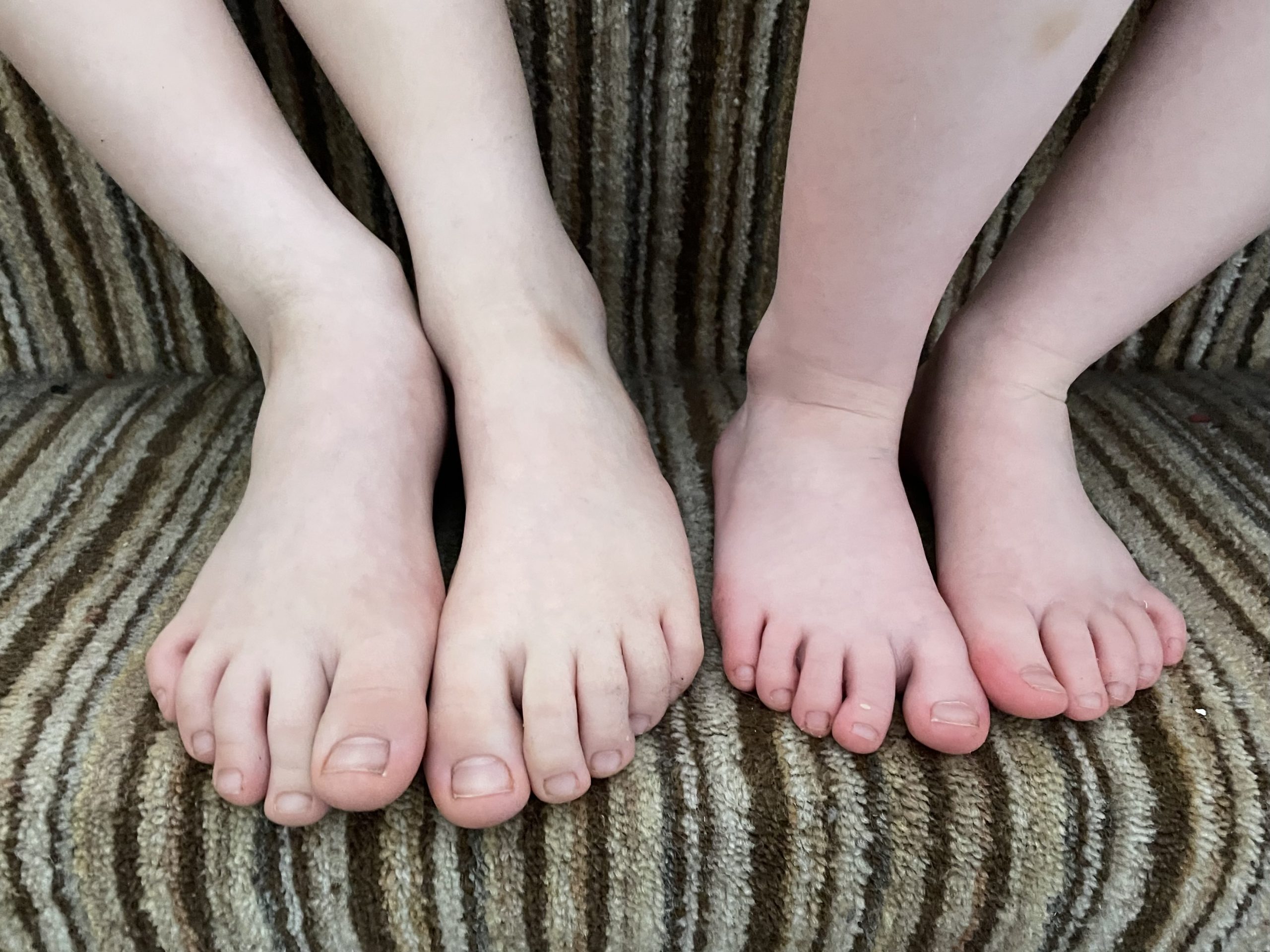
Childrens’ feet initially grow very rapidly, reaching around 50% of their adult length by around 18 months of age. This is quite different to the amount of growing left to do in the rest of the lower limbs and body. However, big feet on child provide a good supporting surface to walk on and having a flat foot increases the ground contact area of the foot. The effect of this is to help balance, which is a skill still developing in early childhood. Thus, an eleven-year-old’s feet do not look dramatically bigger than a five-year-old’s. However the foot arches start to change shape and rise during the second half of childhood, so by age eleven, arches are usually noticeable. although they have not yet fully reached their adult form.
Adult Foot Arches and Their Problems
Adult feet are highly variable in their foot arch heights. The arch changes shape during walking and running, getting flatter once loaded, and being flattest just before the heel lifts off the ground. It is the ability to change shape from non-weightbearing to weightbearing that is important, not the foot’s non-weightbearing shape. However, some feet deform their vault too much on weightbearing, and some don’t deform enough. Feet that are too flexible in adults (often due to weak foot muscles or excessively flexible ligaments and tendons) tend to flatten too much, while overly stiff feet tend to have higher foot vaults that remain high on weightbearing. Neither foot types offer the capacity to deal with changing surfaces and altered power requirements during gait as well as they should. Thus, they experience an increased risk of injury. Therefore, its important your child doesn’t develop such dysfunctional feet, but feet that can control and adapt their flexibility and power at will.
To assess whether you child’s feet are flatter than they should be, consider the shape of the feet in the rest of the family. If adults within the family have flattish looking feet without problems, do not worry that your child has these feet too. In fact, higher arched feet can be far more problematic that flatter feet and often cause ankle instability as well as other walking problems.
Developing Your Child’s Foot Arches
If you want to help your child develop strong feet, they need adaptable arches. From the beginnings of walking as a toddler, try and encourage as much barefoot time as possible. Toddlers gain great benefits from learning to walk barefoot and will find it easier. This is especially true when walking on uneven ground outside. In time, using bare feet to climb and jump will strengthen and toughen the feet. This encourages feet to develop mechanisms of shock absorbing flexibility and also stiffening capabilities that are used for powering forward.
As your child moves towards age five, barefoot becomes even more important. Encourage games of balance and toe walking. Encourage them to go up onto tiptoe and back down again when teaching them to clean their teeth. Make barefoot part of other fun activities too. Try and use shoes with a toe box wider than anywhere else on the shoe. Toes need to spread for the foot to strengthen properly.
When children reach ages seven to eight, they start to have an opinion on the shoes they wear. Try and avoid adult styles as much as possible and perhaps encourage them to be barefoot at least within the house if they have worn enclosed shoes all day. Make sure they can balance easily standing on one leg and that they can continue to do so as they rise onto tiptoes for a brief moment.
Hopefully you child will now find being barefoot is a normal part of home life, but also try and challenge your child to walk and climb barefoot during days out in the countryside or beach, and also when on holiday. Keep this going into early teenage years. If they are using fashion shoes more, make the price of this choice to be barefoot at home. Higher heels and cramped foot space will weaken feet. Let your child know this risk, and they can check out the facts for themselves online.
Painful Feet in Children
Having painful or achy feet is never normal, particularly in children who should have strong healthy feet with ‘low mileage on the clock.’ Painful feet will not function correctly. Most aches and pains are not a result of having feet that are flat, for there are many potential causes of foot problems beyond arch height. The most common ones related to the overloading of immature and developing anatomy through high levels of sports such as soccer, hockey, and rugby. Sudden increases in activity can also be a problem. Children under twelve are too young for safe long distance running of over 10k. Wait until their middle teenage years for running distances above this. Lots of fun running (5K) is the best approach to safe childhood running development, suitable from ages seven and up. Sedentary children do not develop enough strength in their growing anatomy, so that even daily activities can start to cause problems. Don’t let children develop sedentary habits.
Weak arches in the feet can cause pains under the foot and you should seek clinical advice if your child develops such aches and pains after walking. In these circumstances, arch supporting insoles, such as the X-Line Pedipod can be very helpful in resolving the symptoms. These should be used with exercises that strength the feet.
Paediatric Flat Feet Tips & Facts
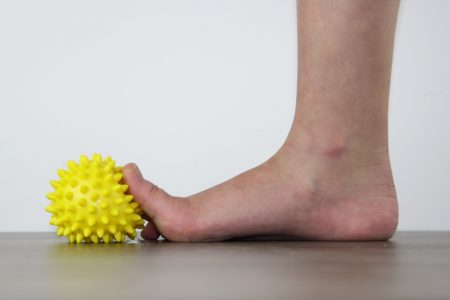
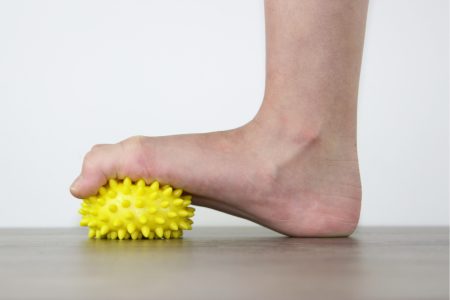
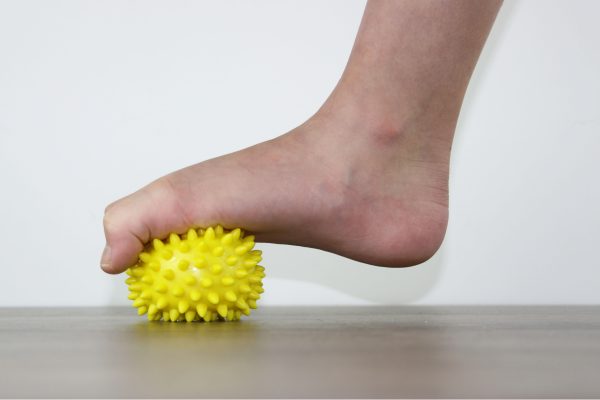
If the arches of the feet are causing aches and pains associated with walking or running, then insoles and foot exercises can greatly help. Take a look at X-Line Pedipod insole. This has been specifically designed to be safe and supportive for children’s developing feet.
The following exercises to strengthen and encourage strong foot-arch function, the following exercises are advised:
Quick Facts
- Flat feet in children can be completely normal. They can function perfectly well for everything humans do with their feet. Indeed, human foot shape is highly variable even among adults.
- One type of foot shape doesn’t seem to directly increase the risk of problems over another. All foot shapes can potentially develop injuries. However, it is true that more extremely odd-looking feet and those that seem to be changing shape quite rapidly, are most at risk.
- If feet that weren’t flat start becoming flat, then they should be assessed quickly, especially if they are painful in the arch or ankles. This is true of adults as well as children.
